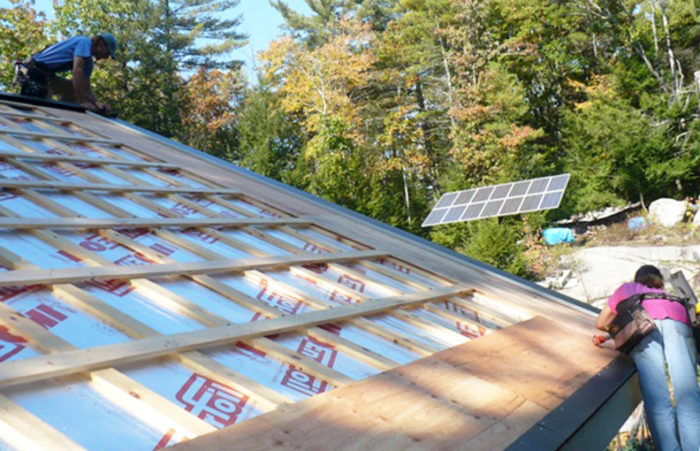
Image Credit: Janice and Steve Kurkoski
Anyone who is contemplating a deep energy retrofit has to consider multiple approaches and techniques for taking the diverse building stock we have and transforming it — from the standpoint not just of energy use, but also comfort, health and safety, and durability — because so much of our building stock is plagued with deficiencies. Retrofits fix the issues with the building — and saving energy almost ends up as a desirable byproduct.
If energy saving is the principal goal, it’s important to look carefully at the choices the occupants make. Energy in buildings goes to more than heating and cooling, which are the main loads that retrofits target. Over forty percent of primary energy in U.S. homes goes to non-thermal loads.
Once we superinsulate a house in New England, energy for heating, once the largest load by a comfortable margin, may become the smallest load among heating, domestic hot water (DHW), and plug loads/lighting/appliances (PLA). To get to truly low energy performance then requires focus on domestic hot water and PLA loads.
Deep savings without a deep energy retrofit
With motivated homeowners, it’s possible to get deep energy reductions without a deep energy retrofit. People can do a moderate amount of weatherization work on a house, and then install a point-source heater such as a single-zone minisplit heat pump to keep the most-used part of the house comfortable. The rest of the house runs cooler and the main heating system stays off until the outdoor conditions get severe.
Lots of savings have been demonstrated with this approach. Couple that with LED lighting replacement in high-use fixtures; great low-flow showerheads like the Delta H2OKinetic; a horizontal-axis clothes washer; and (depending on the household size) perhaps a heat-pump water heater. Replace the dryer with a drying rack and a clothesline. Make a concerted attempt to keep appliances and entertainment stuff off when not using it. Hunt down phantom loads.
Combine all of the above, and the total outlay might be $10,000 to $20,000. The energy saved might equal or even exceed what a second household might achieve by going the whole enchilada and doing a deep energy retrofit, especially if that second household is much less conscious of their domestic hot water and PLA usage, and heats the whole retrofitted house to comfort temperatures.
Relief from ice dams is worth something
I’ve noticed that households that pursue a deep energy retrofit have a pretty wide range of energy use per person. The climate doesn’t care how we each reduce our consumption, just that we do. Of course a motivated, conserving household living in a house that has undergone a deep energy retrofit will have the lowest energy usage of all, but if a household is committed to reducing their carbon emissions, they needn’t spend six figures to get there.
What a deep energy retrofit gets that the other strategy (targeted weatherization and behavior-based deep energy reductions) may not is relief from the non-energy deficiencies — ice dams, pest infestations, water issues, mold, etc. — and true comfort. The cost of remediating those defects shouldn’t have to be paid for solely by the energy savings that accrue.
Comparing a deep energy retrofit with weatherization
I live in a zero net energy house that has undergone a deep energy retrofit. Previously, I weatherized a pretty good house and also reaching zero net energy.
I like the second house a lot better because of its superior comfort and air quality. But I spent a lot more money to get there, and the total energy performance isn’t much better, because domestic hot water usage and PLA loads are pretty similar. The deep energy retrofit house uses less energy for heating at an even 70°F setpoint than the pretty good house used with some temperature setback and letting parts of the house get cooler. I hope to live in this retrofitted house for a long time, and it’s worth it to me to have spent what I did to get a house my wife and I are so pleased to inhabit. I’m just not fooling myself that I needed a deep energy retrofit to achieve deep energy reductions, if that was my only goal.
A deep energy retrofit course
I’m excited because I’ve been putting together a new online course on deep energy retrofits. Because there are so many different buildings and conditions, and therefore solutions, the course is based on case studies, and we show many approaches that people have chosen to implement.
To learn more about the transformative possibilities of deep energy retrofits, click on the link for the ten-week Deep Energy Retrofit online course, and join me starting September 14th.
Weekly Newsletter
Get building science and energy efficiency advice, plus special offers, in your inbox.





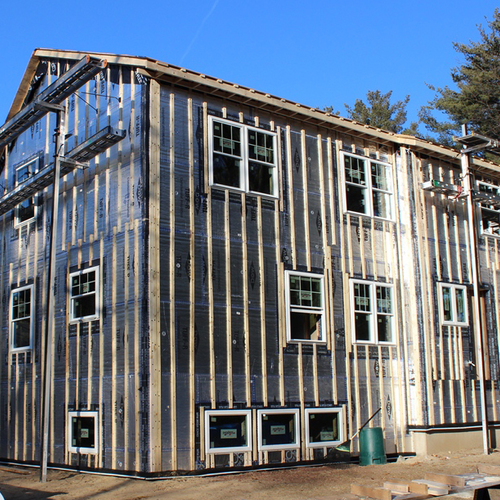
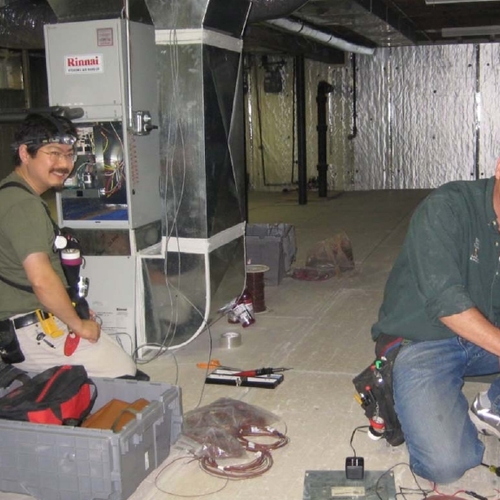
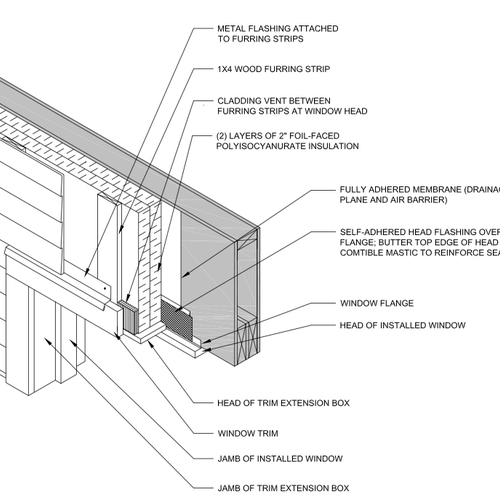
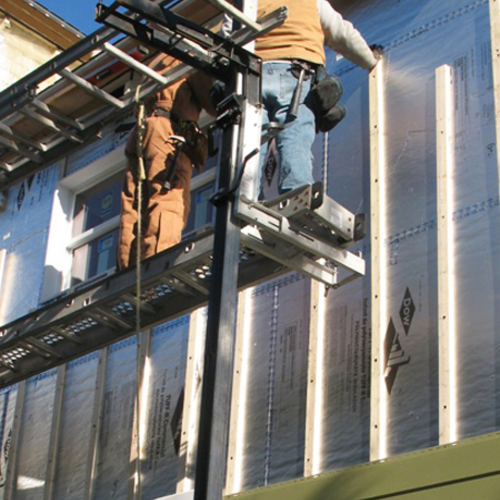






8 Comments
It's only a matter of time . . .
Great reflections, Marc.
The comfort and durability points are no doubt titans in the arguments for DER, but I am increasingly feeling that the energy savings argument can and soon will play a larger role than "desirable byproduct."
Henry Paulson--no flaming liberal-- recently gave a talk at the Commonwealth Club, where he spoke about being in a meeting with several CEOs of Fortune 500 companies. They all expressed a fundamental understanding of climate change as a pending risk management factor that they all are currently accounting for. When Paulson was asked how an economist should deal with such a pending risk, his response was a carbon tax. I almost drove off the road when I heard it. He quickly acknowledged that such a tax is politically impossible right now, however fiscally necessary. HIs plea was out to activists, educators (and I would add builders and designers) to do what is necessary to change the cultural attitudes about such a tax. Designing and building a house based on anticipated life style needs is an inherently speculative enterprise that we all do all the time. Shouldn't we be placing more emphasis on the economic benefits of a DER based on the anticipation of more rationally priced (read "taxed") fossil fuels. It is only a matter of time.
Response to Joseph Carry
Joseph,
Like you, I have long advocated in favor of carbon taxes. Eventually, our country will have them.
That said, I'm not sure that we face a future with high energy costs. The rapid drop in the price of PV-generated electricity and wind-generated electricity hold forth the possibility of a cheap energy future.
Predictions are always difficult, especially about the future.
relief from pest infestations?
Not clear to me how deep energy retrofits provide relief from pest infestations. Anybody?
Response to Antonio Oliver
Antonio,
The best way to reduce the chance that a house will have mice is to build a house with attention to airtightness.
carbon tax
in reply to Joseph Carry,
No need to fall off your chair, Paulson was just echoing the sentiments of the oil majors like Exxon, who have been assuming a future carbon tax in their long-term financial planning for many years now.
While I was happy to find that out (many years ago), I now think it is a bit of a smokescreen. Climate Change is clearly a threat to the existing business model and profits of the oil companies, and the mgmt of those companies need to look like they are doing something in response to that threat. The accounting change allows them to say to shareholders "See, we are assuming that climate change will affect our business, through a pesky carbon tax, and our models say we will still make money and your dividend is safe far into the future". They get to say this 'for free' in the sense that they don't need to **do anything** except sit around and wait for the rest of us to enact a carbon tax.
More interestingly, several oil majors signed off on a letter earlier this year imploring world governments to consider a carbon tax/trading scheme at the Paris meeting later in the year. Wow! Why would they do that? Notably, designing such a scheme is NOT on the table for Paris, rather the negotiations center on developing emission reduction targets that each country can realistically achieve, and getting them to pledge to them. Looks like a global Clean Power Plan. Longer term, country-level enforcement would likely be done through an entity like the World Trade Organization....violating countries would have their exports tariffed in lieu of a fine. A global carbon tax with a single price is a totally unworkable concept because it is too regressive given the disparities in global personal income....individual countries may themselves decide that a 'within border' carbon trading scheme might be a tool for hitting their reduction targets, or they might not...it becomes a detail.
I think we can conclude that the oil co letter in 2015 is a sign that the majors would PREFER a carbon tax to what is actually coming down the pipe: significantly reduced fossil energy demand and a corresponding 'write-down' of their assets and projected future profits.
Deep energy retrofit vs deep retrofit
When you take a close look at a house and decide to fix all the problems, the cost of the other fixes can easily exceed the costs of the energy related improvements. And it becomes hard to separate the accounting for improvements that are for durability, health and comfort, energy, aesthetics, and function. The ideal is to find ways to get synergy between those goals, so that most of the work is addressing several or all of those objectives, and end up having it all at a similar cost to only meeting some of those goals. It's hard to achieve that ideal in practice, partly because predicting costs is much harder than predicting hygrothermal behavior of complex 3D assemblies in mixed climates, and because you can't predict the surprises you'll find working on an old building. Marc's course sounds like a great way to prepare for the many challenges.
If we tell stories about six figure deep energy retrofits, it's easy to conclude that they are wasteful, because that name implies that the energy savings should pay for the full cost. Maybe we should just call such projects deep retrofits, and make energy one of the many benefits on the list.
Comfort equals useful square footage
Having done an energy retrofit, another benefit is added USEFUL square footage. Our Flagstaff 1977 spec home had two very cold north bedrooms. My wife is a painter and used the dining room for her studio until I re-insulated walls, stem and attic, cutting energy use by 60%. This also made the north bedrooms comfortable, year round (less than 4 degrees cooler) and she now has her studio in one of them and my office in the other. One could say we added over 300 square feet to our house without changing the footprint.
Our kids, who grew up in those bedrooms, used to complain about seeing their breath when they woke up on cold winter days. Now they complain about why we waited until after they moved out to do this.
Deep retrofits
We're about half way through the deep retrofit of our 1971 ranch house in Sonoma County, CA. I want to underline something Charlie says about all of the reasons to do a deep retrofit. I've been listing out for folks an almost identical list, in my order of priority: comfort, energy, function, durability, health, and aesthetics. The first three are the biggest for us and the last three are add-ons. Important but still add ons. Other folks, even in a similar climate region, will rank these differently of course.
We're not that motivated by reducing heating or cooling costs in our moderate climate. We don't have an air conditioner and have just suffered through the occasional hot days (today included). Since we deep retrofitted the west wall it is noticeably cooler on hot days, warmer in the winter, and quieter. The last two years we haven't used our furnace and last year we barely used the highly efficient wood stove. We've had some chilly mornings (60) but even with a two year old we've weathered those fine. So it's less about saving money on energy for heating and cooling and more about improving the comfort range of the house. I recognize that I live in a unique family!
I say that durability is an add on because as we open up walls to improve or add insulation (no insulation on either bathroom we've opened up!) we also add a couple foundation bolts (or just use beefier washers) and then we add full length OSB sheathing to replace the partial T1-11. We're also repairing the various rotted corners or termite-ridden rim joists while eliminating the moisture infiltration that supports termite habitat.
Replacing windows and improving bathroom ventilation has reduced mold, which was a problem. That's a major health plus but definitely wasn't the driver for the whole project. As an aside, I'm not sure that living at a constant 70 degree environment is really that healthy.
My dad and I with the help of a handyman are doing all the work, so it's not going super fast. We're about 15 months into it and we might be at half way.
We're amateurs and have learned tremendously from GBA. I'll try to post more and of course would very much welcome feedback from folks on here.
Log in or create an account to post a comment.
Sign up Log in